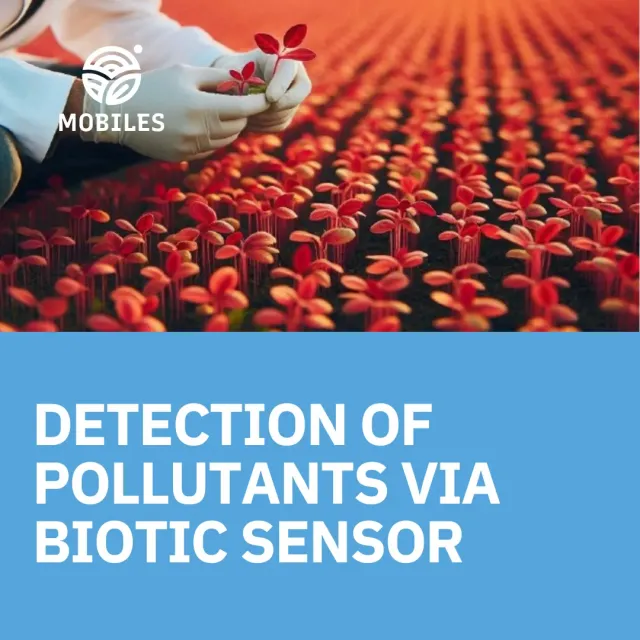
Under the leadership of the University of Rome (UR), CNR-IRET, ARO and CUT are developing advanced biosensors to detect environmental pollutants such as heavy metals (e.g., arsenic), pesticides, antibiotics, and microplastics. These sensors will help monitor soil, water, and air quality using biological components like plants, bacteria, and diatoms (a type of algae).
Arsenic is widely distributed throughout the environment (air, water, and soil) and is highly toxic in its inorganic form. Long-term exposure to elevated levels of arsenic through drinking contaminated water or eating food grown on soil contaminated by arsenic from industrial processes can lead to chronic arsenic poisoning, which causes skin lesions and skin cancer (WHO[1]). The MOBILES scientists are engineering certain plants to create so called “As-indicators.”
One of these plants is Arabidopsis thaliana, a small plant from the mustard family that has been widely used as a model system, which naturally tolerates Arsenic. Using advanced genetic tools, scientists will modify Arabidopsis thaliana to produce a visible pigment in response to contamination.

Figure 1: Arabidopsis thaliana, Created in https://BioRender.com
In collaboration with the CNR-IRET, the plant species Pteris vittata was selected for its innate ability to tolerate high levels of arsenic and to accumulate this contaminant in its fronds. As-indicator plants will be cultivated in greenhouse conditions on soils and water supplemented with arsenic salts, followed by colorimetric analysis.

Figure 2: Pteris vittata. Source: CNR
To ensure the safe use of these biosensors in the field, researchers are also developing a system to render these plants sterile under controlled conditions, preventing their uncontrolled spread. The cloning procedure will be supervised by RICPA (Research and Innovation Center Pro-Akademia, Poland) which will evaluate the impact of such genetically modified plants on other organisms. Indeed, by using an artificial ecosystem with small animals (invertebrate) and other plants it will be verified if MOBILES organisms are a treat for the environment.
Another part of the project focuses on using genetically modified bioluminescent bacteria to detect toxic substances in water. These bacteria have been genetically modified to emit light when exposed to pollutants due to a chemical reaction that converts chemical energy into light energy. This feature allows real-time of these bacteria for detection of pollutants through an optical sensor. Scientists are testing different bacterial strains to improve their sensitivity and ensure the system works efficiently in real-world conditions. The stability of the bioluminescent clones in natural environments is also crucial for the future use of the biosensor; therefore, stability tests will be conducted.
To further enhance detection, researchers are building a database of bacterial “light fingerprints”—unique responses of bioluminescent bacteria to different pollutants (e.g., antibiotics and pesticides) in various compositions and concentrations. This will help identify contamination sources quickly and accurately.
Diatoms are single-celled algae and constitute one of the largest groups of organisms on Earth. They can form vast blooms in the ocean and support the life of other marine organisms at the base of aquatic food chains. Due to their ability to absorb and degrade bioplastics, diatoms are central to this project task. Microscopic algae will be studied and employed to detect microplastics and nanoplastics in seawater.
These diatoms react to plastic pollution, in particular nanoplastics originating from bioplastic, by changing their light absorption, providing a natural way to monitor contamination without chemical intervention. Scientists are testing how well diatoms degrade different types of plastic to better understand the environmental impact of pollution.
By combining plant-, bacterial-, and diatom-based biosensors, this research aims to create effective, low-cost solutions for detecting harmful substances in the environment, contributing to cleaner water and healthier ecosystems
[1] https://www.who.int/news-room/fact-sheets/detail/arsenic